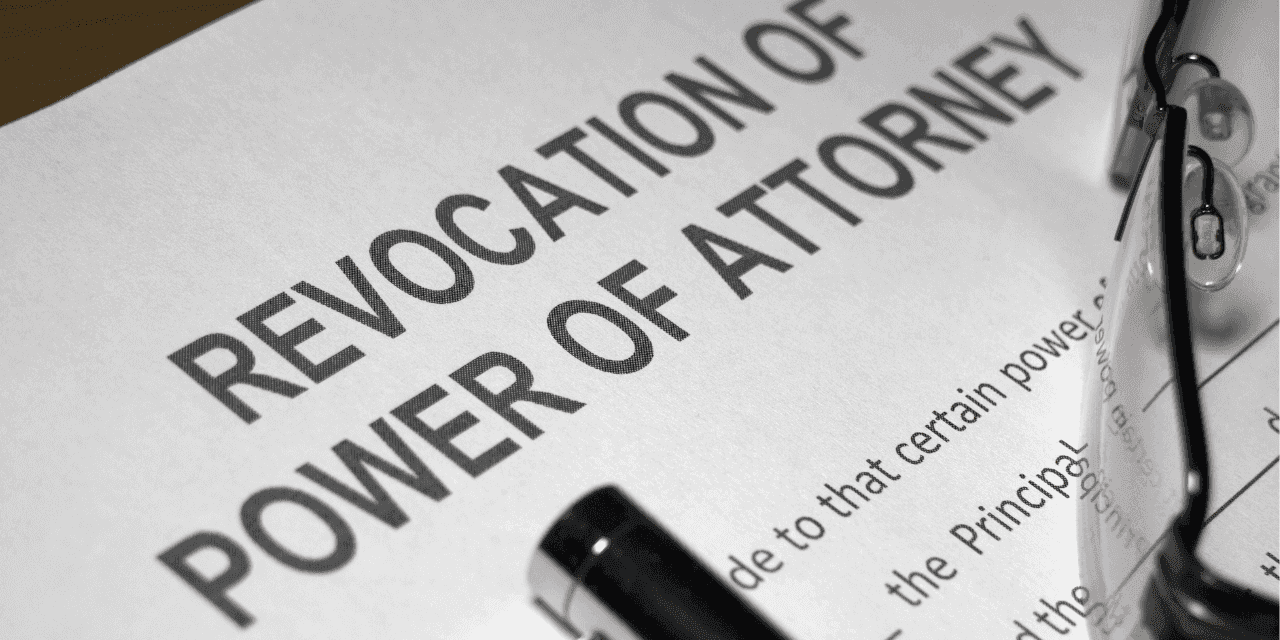A Power of Attorney (POA) is a powerful legal document that grants someone else the authority to act on your behalf in personal, financial, or medical matters.
However there may come a time when you need to revoke that power. Whether due to changes in your relationship with the appointed attorney, a shift in your personal situation, or simply a decision to take back control, creating a Deed of Revocation of Power of Attorney is a crucial step to ensure your wishes are respected.
A Deed of Revocation of Power of Attorney ensures that the previous powers are nullified, protecting your interests and adapting to new situations.
Why to Do A Deed of Revocation of Power of Attorney?
Revoking a Power of Attorney ensures that the person you originally granted authority to no longer has legal control over your affairs. If your relationship with the attorney has changed or you no longer trust their judgment, revocation is necessary to protect your interests.
Life changes such as marriage, divorce, relocation, or changes in health might necessitate revoking an existing POA and appointing someone else. A Deed of Revocation allows you to adapt to these changes, ensuring that the person handling your affairs is the one you currently trust the most.
Unfortunately, there can be instances where the person holding your Power of Attorney may misuse their authority. By formally revoking the POA, you prevent any potential misuse and safeguard your assets, finances, and well-being.
⚠️ Simply telling someone that their power has been revoked isn’t enough. Without a formal Deed of Revocation, the original Power of Attorney remains legally binding, which can lead to complications. A legally recognised revocation document ensures that the revocation is clear, official, and enforceable.
Create a Deed of Revocation of Power of Attorney
Creating a Deed of Revocation of Power of Attorney is straightforward but requires careful attention to detail. Here’s how to do it:
1. Review the Original Power of Attorney
Start by reviewing the original Power of Attorney document to understand its terms, the powers granted, and the identity of the appointed attorney.
This will help ensure that your revocation is comprehensive and specific.
2. Draft the Revocation
Your Deed of Revocation should include the following key elements:
- Your full name and address
- A statement declaring the revocation of the Power of Attorney
- Details of the original Power of Attorney, including the date it was signed
- The name and address of the attorney whose power is being revoked
- The date of revocation
- Your signature
Revocation of Power of Attorney – a Template
Below you can find a simple template to draft the Revocation of Power of Attorney.
DEED OF REVOCATION OF POWER OF ATTORNEY
This Deed of Revocation is made on this [Date] by [Your Full Name] of [Your Address] (hereinafter referred to as "the Donor").
Whereas, I, the Donor, have previously executed a Power of Attorney dated [Date of Previous Power of Attorney], appointing [Name of Attorney] of [Attorney’s Address] (hereinafter referred to as "the Attorney") to act as my Attorney.
Now, I hereby revoke the said Power of Attorney and declare that all powers and authorities conferred on the Attorney by the said Power of Attorney are revoked and of no further effect as of the date of this Deed of Revocation.
1. Revocation
I, the Donor, hereby revoke and cancel the Power of Attorney granted on [Date] to [Name of Attorney]. I declare that [he/she/they] shall no longer act as my Attorney from the date of this Deed of Revocation.
2. Notification
I confirm that I will take reasonable steps to notify the Attorney of this revocation and notify any relevant third parties or organisations affected by the revocation of the said Power of Attorney.
3. Interpretation
The singular includes the plural and vice versa. The masculine includes the feminine, and vice versa.
Signed and delivered as a deed by the Donor:
[Signature of Donor]
[Your Full Name]
[Your Address]
[Date]In the presence of:
Witness Signature: ________________________
Witness Name: ____________________________
Witness Address: _________________________
Witness Occupation: _______________________Date: ___________________________
3. Notify the Attorney and Relevant Parties
After creating the Deed of Revocation, you must notify the attorney in writing that their powers have been revoked.
💡 It’s also important to inform any institutions, such as banks or healthcare providers, that the POA is no longer valid.
4. Register the Revocation
If your original POA was registered with the Office of the Public Guardian (OPG), you must notify the OPG of the revocation. This ensures that the revocation is officially recorded and recognised.
How to Notify: Send the Deed of Revocation to the OPG either by post or through their online services, if available. Including a copy of the original registered POA can help expedite the process.
Taking Control of Your Legal Affairs
Revoking a Power of Attorney is an important decision that should be approached with care. By creating a Deed of Revocation of Power of Attorney, you take control of your legal and financial affairs, protecting your interests and adapting to life’s changes.
Whether due to a change in circumstances or a shift in trust, ensuring that your Power of Attorney aligns with your current wishes is vital for your peace of mind.

